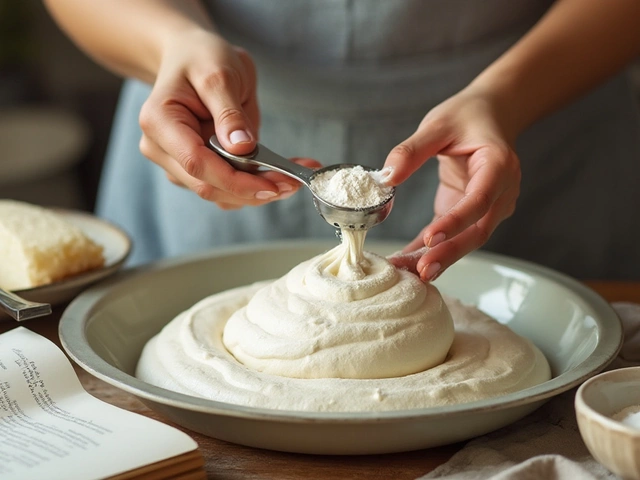How to Bake Cookies: Easy Steps for Chewy, Puffy Results
Want cookies that are soft in the middle and just the right amount of lift on the top? You’re in the right spot. Below you’ll find a straight‑forward guide that covers mixing, shaping, and baking, plus a quick look at the science that makes cookies rise.
Mixing the Dough the Right Way
Start with room‑temperature butter. Soft butter blends better with sugar and gives you a smoother dough. Cream the butter and sugar together for about two minutes – you’ll see the mixture turn pale and fluffy. That’s the first sign you’re on the right track.
Next, add an egg (or two, depending on the recipe) and a splash of vanilla. Beat just until everything is combined; over‑mixing can develop too much gluten and make the cookies tough.
When you add the dry ingredients – flour, a pinch of baking soda or powder, and a pinch of salt – stir gently. The leavening agents are what push the cookies up, so you don’t want to lose any of their power by over‑stirring.
Why Cookies Rise: The Science Made Simple
Ever wondered why some cookies puff up while others spread flat? It’s all about air, fat, and the right amount of leavening. Baking soda reacts with acidic ingredients (like brown sugar or chocolate) and creates carbon dioxide bubbles. Those bubbles lift the dough as it heats.
Another key player is the fat‑to‑flour ratio. More fat means the cookie spreads more; less fat lets the leaveners do their job, giving a taller, puffier bite. That’s why recipes that call for melted butter often make flatter cookies than those using creamed butter.
If you want extra height, try chilling the dough for 30 minutes before baking. Cold dough holds its shape longer, so the bubbles have time to expand before the butter melts.
Now that you know the why, let’s talk about the how.
Baking Tips for Consistent Results
Preheat your oven to 350°F (175°C) and let it fully heat up. An even oven temperature prevents some cookies from over‑browning while others stay raw.
Use a parchment‑lined baking sheet. It stops the bottom from getting too dark and helps the cookies slide off in one piece.
Scoop the dough with a tablespoon or a cookie scoop. Consistent size means they bake evenly. Leave about 2 inches between each cookie – they spread a little.
Bake for 9‑12 minutes, depending on size. Look for lightly golden edges; the centers will finish cooking as the cookies cool.
Pull the tray out and let the cookies sit for a minute before moving them to a wire rack. This short rest lets the structure set, so they don’t crumble.
If you love chewy cookies, add a bit more brown sugar and a splash of milk. For crispier edges, use more white sugar and bake a minute longer.
And there you have it – a no‑nonsense way to bake cookies that rise just right, stay soft inside, and have that satisfying bite you crave.
Try one batch, tweak the chill time or butter amount, and you’ll quickly find the perfect formula for your kitchen. Happy baking!

Expert Guidelines for Perfect Cookie Baking Every Time
Unlock the secrets of bakery-worthy cookies at home with three essential baking guidelines. Learn why ingredients, timing, and technique matter—and the mistakes to avoid.
View More




